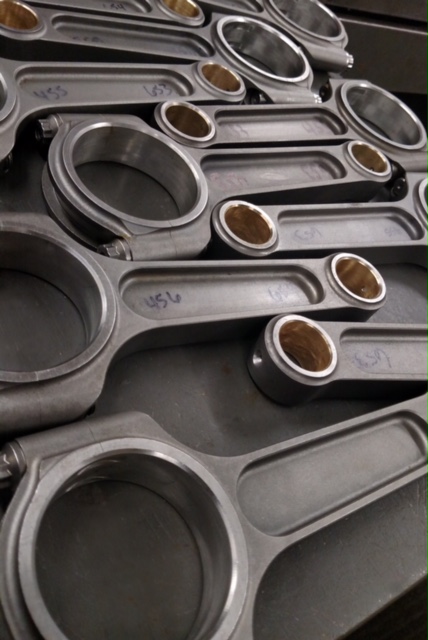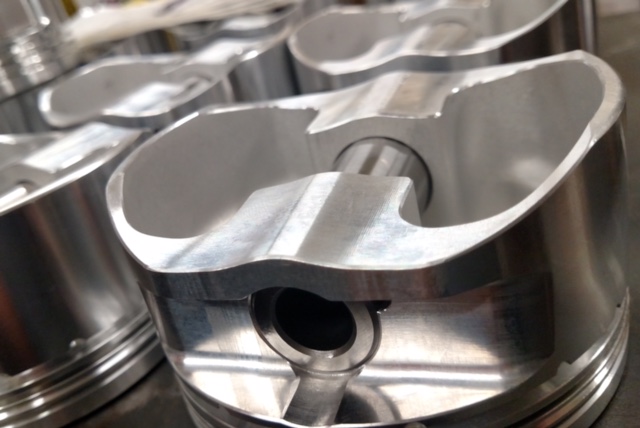some new parts going in!
look at the wear on my bearings

Results 51 to 75 of 99
Thread: Prefix 1st Nth 2nd
-
01-05-2017 #51Enthusiast


- Join Date
- Jun 2014
- Location
- San Diego
- Posts
- 1,252
-
01-05-2017 #52Enthusiast



- Join Date
- Feb 2015
- Location
- Paradise Valley
- Posts
- 5,481
Details! Are you just doing heads/cam? Or are you increasing bore? stroke? Compression ratio?
-
01-05-2017 #53Enthusiast


- Join Date
- Oct 2014
- Posts
- 585
Wow! How many miles did you have on them?
-
01-05-2017 #54Enthusiast



- Join Date
- Oct 2013
- Location
- Ohio
- Posts
- 3,889
Did they find the source of the oil consumption.
-
01-05-2017 #55
-
01-05-2017 #56Enthusiast


- Join Date
- Jun 2014
- Location
- San Diego
- Posts
- 1,252
cylinders just had a clean up. we decided on that in case of future power adders like Nitrous, Aaron thought the slight gain wouldn't be worth the risk of a thinner wall, compression is bumped to 11.5:1, flex fuel/E85, MoTeC, larger headers, Monster cam, further head porting on Arrow heads, motor mounts, carbon clutch, etc...
20k
weak oil rings cuased blowbye. oil in combustion caused detonation which is why my bearings look like shit.Last edited by KB Viper; 01-05-2017 at 11:15 AM.
-
01-05-2017 #57Enthusiast



- Join Date
- Nov 2013
- Posts
- 1,483
"Wow" as in good and "wow" as in bad......probably a good thing you got the engine torn down when you did.
Should be a monster on the streets when she's all done
-
01-05-2017 #58Enthusiast







- Join Date
- Oct 2013
- Location
- Tucson, Arizona
- Posts
- 4,776
Those new parts look purty. It's a shame you won't get to see em.
Congrats on the build!
-
01-05-2017 #59Enthusiast


- Join Date
- Oct 2013
- Posts
- 4,693
I think the same thing. With bearing wear like that, perhaps just a matter of time until kaboom if you had left her stock?
-
01-05-2017 #60Enthusiast


- Join Date
- May 2015
- Location
- Watchung,NJ
- Posts
- 504
KB Viper, how do the journals on the crank look? Do they need to be turned? I believe you are using the original crank shaft in your build. Good luck with a very special sounding build. Please continue to keep us posted.
-
01-05-2017 #61Enthusiast


- Join Date
- Aug 2015
- Posts
- 120
Ugh....those bearings are just about toast. Has Nth seen this to be common in our GenV motors? so annoying, i'm sure everyone seeing that is thinking about their warranty.
Now i'm to the point of wanting to do a rebuild purely to make the motor perfect and not worry about it.
-
01-05-2017 #62Enthusiast


- Join Date
- Jun 2014
- Location
- San Diego
- Posts
- 1,252
thanks, I have high hopes.
thanks!
Aaron said 3 of the bearings lost their "crush" and that some of the oil rings lost their tension. we believe that the root cause for me was a set of shitty oil rings that caused blowby hence my burning 1 quart every 600ish miles (Aaron said my intake manifold was soaked with oil and my piston tops showed all the signs of oil burning in the hole). Also please keep in mind I am running the DSE dual catch can set up which my dirty side was filling up every 300ish miles and I did have the updated valve cover installed (R29). Oil in the combustion process caused detonation which is why by bearings look like shit. His opinion is like yours, my motor would not have lasted to much longer, especially the way I drive.
Aaron said crank was fine and just needed a clean up, but he did say the crank dampener was spinning/spun on the crank snout but that has now been fixed and new ATI dampener is on.
I'll let Aaron answer that question.Last edited by KB Viper; 01-05-2017 at 11:32 AM.
-
01-05-2017 #63Enthusiast


- Join Date
- Oct 2013
- Posts
- 4,693
Kris, thanks for the update. Like Zee, we are all wondering if many of our engines, stock or not, warranty or not, are on borrower time after seeing those pics.
-
01-05-2017 #64Enthusiast



- Join Date
- Oct 2013
- Posts
- 2,315
KB did Aaron check the bores to see if they were perfectly round? That could also cause excessive blow by and would of course have to be addressed as in the overbore work.
-
01-05-2017 #65Enthusiast


- Join Date
- Nov 2015
- Posts
- 302
I think it's really important to recognize something about these engine failures that have been occurring; there isn't just one blanket cause for all of them. I feel like a lot of people are hoping to peg everything on one sole reason (IE block washing station for debris) rather than look at the fine print, so to speak. When you teardown an engine with a known issue you have to keep an open mind about order of operations - what happened, when. In our opinion, Kris' engine shows way too many signs of oil in the combustion chambers (which is havoc for the combustion process) to ignore and the rod bearings have likely been getting hammered and deformed from continual pre-ignition or detonation. A tough piston forging can usually take much more of this abuse compared to bearings.
With that in mind, it doesn't now mean that every person with oil consumption has to be worried about their rod bearings. Kris' car was quite modified, is driven incredibly hard (his words), and is forced to run on some of the worst fuel available to the performance world (California 91 octane). Combine all of those things and it may have just produced the right environment for something like this to happen.
-
01-05-2017 #66Enthusiast


- Join Date
- Nov 2015
- Posts
- 302
-
01-05-2017 #67Enthusiast







- Join Date
- Oct 2013
- Location
- Montgomery Texas
- Posts
- 6,732
-
01-05-2017 #68Enthusiast


- Join Date
- Oct 2013
- Posts
- 4,693
Thanks for the explanation. Appreciated.
-
01-05-2017 #69Enthusiast



- Join Date
- Nov 2013
- Posts
- 1,483
-
01-05-2017 #70Enthusiast



- Join Date
- Oct 2013
- Location
- Ohio
- Posts
- 3,889
-
01-05-2017 #71Enthusiast


- Join Date
- Oct 2013
- Posts
- 1,900
Dont these cars have knock sensors to retard timing upon detonation?
-
01-05-2017 #72Enthusiast


- Join Date
- Jul 2016
- Location
- Alberta
- Posts
- 317
Something I don't get here:
Why would a modern v-10 motor be so knock prone when combusting motor oil? Knock kills rotary engines instantly, yet on my 2 rotor at 18 psi, it made 502 rwhp on 91 octane gas, I was injecting a litre of 20w50 engine oil every 500 km's ( 300 miles) via the OMP and premixing the gas with 2 stroke oil at 150:1 at the same time to control seal wear....I did a lot of road course miles with that car.... Just seems odd for oil causing harsh detonation in a motor with way less chamber pressures and active knock detection with an engine management system 20 years newer than I was using (which didn't have any active knock control).
-
01-06-2017 #73Enthusiast





- Join Date
- Oct 2013
- Location
- Dayton, OH
- Posts
- 4,803
The thing to remember with KR is that there is a decay period...if KR is detected, the PCM will pull timing and add fuel. Once the motor stops knocking for a certain period of time, the PCM will revert back to the originally commanded timing and fueling until it knocks again, starting that whole cycle over again. With KR sensors, they have to detect an event before they intervene, so damage is already being done...if that knock is severe enough, it's only a matter of time before it's knocked one time too many. If I'm not mistaken, oil has an octane rating of around 50, so it isn't the best thing to be ingesting along with crap 91 octane gas.
What I don't know is if these PCMs also have a burst knock feature...typically, that would work by pulling some amount of timing when a large inrush of air is detected (like by going WOT). It's something I've seen implemented on Chevy PCMs, but I've not seen any data to suggest that Chrysler has something similar for this application.
-
01-06-2017 #74Enthusiast



- Join Date
- Oct 2013
- Location
- Ohio
- Posts
- 3,889
Just a guess, your described failures were probably pre-ignition. In this case detonation is the issue, cars can live a long time with moderate detonation. The oil ladden mixture is not totally burned and then re-ignites as the piston is going down on the power stroke. You now have the normal pressure of ignition and on top of that you have the sharp spike of re-ignition. The knock sensor looks for that sharp spike. The noise is actually the engine mechanically ringing (resonance). It is not far different than hitting the engine with a hammer
-
01-06-2017 #75Enthusiast


- Join Date
- Jul 2016
- Location
- Alberta
- Posts
- 317








 Reply With Quote
Reply With Quote

Bookmarks